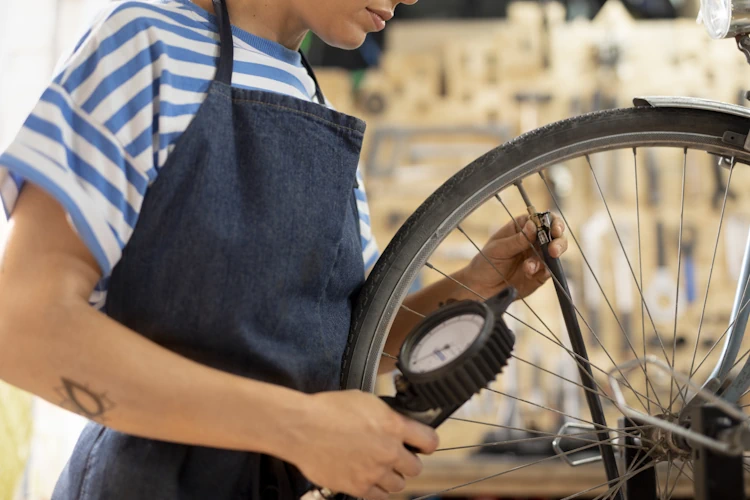Embarking on cycling adventures brings a sense of freedom and exploration, but it’s essential to be prepared for unexpected challenges, like flat tires. A reliable puncture repair kit is a cyclist’s best companion on the road. With various options available, selecting the right kit tailored to your needs can make the difference between a minor hiccup and a major setback. Let’s explore the factors to consider when choosing the perfect puncture repair kit for your cycling adventures.
Consider the Type of Kit
a. Basic Patch Kits
Basic patch kits typically include adhesive patches, sandpaper, and tire levers. These kits are compact and ideal for minor punctures. They are a cost-effective choice for cyclists who prefer simplicity and have experience with manual repairs.
b. Glueless Patch Kits
Glueless patch kits are convenient and mess-free. They come with self-adhesive patches that stick directly onto the punctured area. These kits are user-friendly, making them suitable for cyclists looking for a quick and easy solution.
c. Tubeless Repair Kits
Designed specifically for tubeless tire setups, these kits include tools like tire plugs and a plug insertion tool. Tubeless repair kits are essential for cyclists venturing off-road, where tubeless tires are popular for their resistance to pinch flats.
d. Compact All-in-One Kits
For cyclists prioritizing portability, compact all-in-one kits are a great option. These kits typically combine patches, tire levers, and sometimes even a small pump or CO2 inflator in a streamlined package, ensuring you have everything you need in one go.

Evaluate the Quality of Tools
a. Patch Quality
Regardless of the kit type, the quality of the patches is crucial. High-quality patches ensure a reliable and lasting seal. Check for patches with strong adhesive properties and durability to withstand the rigors of cycling.
b. Tire Levers
Tire levers included in the kit should be sturdy and capable of prying the tire off the rim without causing damage. Look for ergonomic designs that provide a comfortable grip, especially during challenging tire removal.
c. Inflation Tools
If the kit includes an inflation tool, such as a mini pump or CO2 inflator, assess its efficiency and compatibility with your bike’s valve type. A reliable inflation tool is essential for getting back on the road swiftly.
Consider Portability and Size
a. Size and Weight
For cyclists conscious of weight and space, the size and weight of the puncture repair kit matter. Opt for a kit that strikes a balance between being compact enough to carry easily and containing all the necessary tools for effective repairs.
b. Packaging
Durable packaging is crucial to protect the kit’s contents from wear and tear. Look for kits with sturdy cases or pouches that keep everything organized and shielded from the elements.
Compatibility with Your Bike
a. Tire Compatibility
Ensure the repair kit is compatible with the type and size of tires on your bike. Different kits cater to various tire sizes and styles, so selecting the right one prevents any compatibility issues during a roadside repair.
b. Valve Compatibility
Check that the kit’s inflation tools are compatible with your bike’s valve type. Whether it’s Presta or Schrader valves, having the correct inflator ensures a seamless inflation process.
Read User Reviews
Before making a final decision, read user reviews of the puncture repair kit you’re considering. Real-world experiences from other cyclists can provide valuable insights into the kit’s performance, durability, and ease of use.
Conclusion
Selecting the right puncture repair kit is an investment in hassle-free cycling adventures. Whether you prioritize simplicity, portability, or comprehensive tools, carefully considering the type of kit, evaluating the quality of tools, assessing portability and size, and ensuring compatibility with your bike will guide you toward the perfect choice. A well-chosen puncture repair kit ensures that a flat tire doesn’t deflate your enthusiasm during your cycling journeys.
FAQs
- Q: Can I use a glueless patch kit for larger punctures? A: Glueless patch kits are best suited for smaller punctures. For larger punctures or cuts, consider carrying additional tools like tire boots or a spare tube for a more robust solution.
- Q: Are tubeless repair kits only for off-road cyclists? A: While tubeless repair kits are popular among off-road cyclists, they can be beneficial for any cyclist using tubeless tires. They provide quick and effective solutions for punctures, whether on or off-road.
- Q: What should I do if the tire sidewall is damaged? A: Puncture repair kits are generally effective for tread punctures. If the sidewall is damaged, it’s advisable to carry a spare tire or use a tire boot as a temporary solution and replace the tire at the earliest convenience.
- Q: Can I use CO2 inflators in cold weather? A: CO2 inflators may experience reduced efficiency in very cold conditions. Keep the inflator warm before use, and consider carrying a backup mini pump, especially in winter cycling conditions.
- Q: How often should I check and replace items in my puncture repair kit? A: Regularly inspect the contents of your repair kit, especially adhesive patches, for signs of wear or expiration. Replace any damaged or expired items to ensure the kit remains reliable when needed.